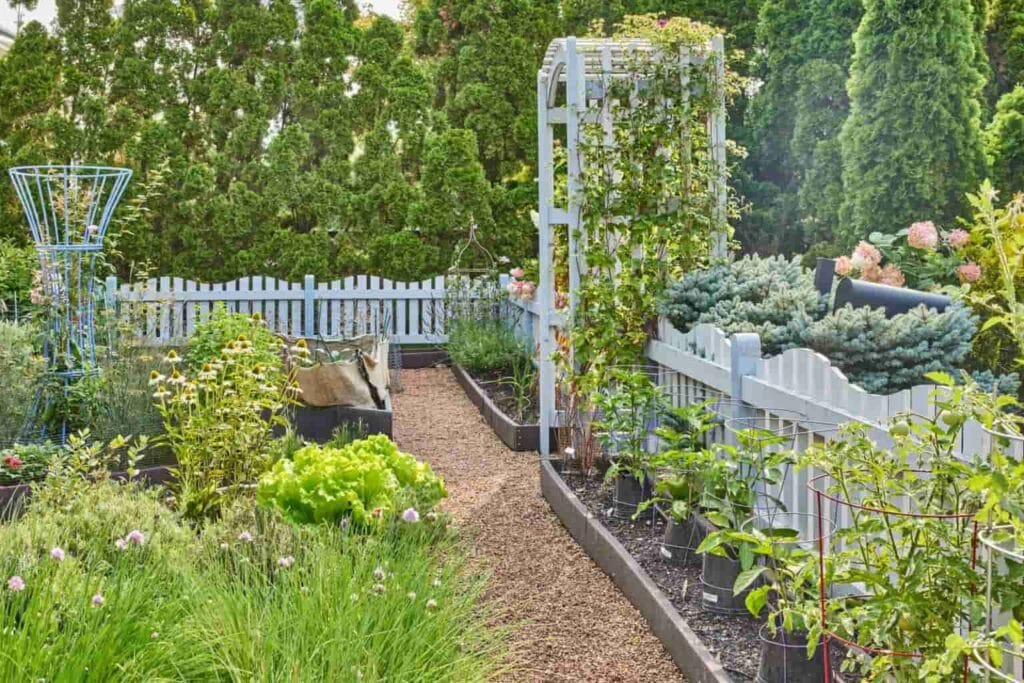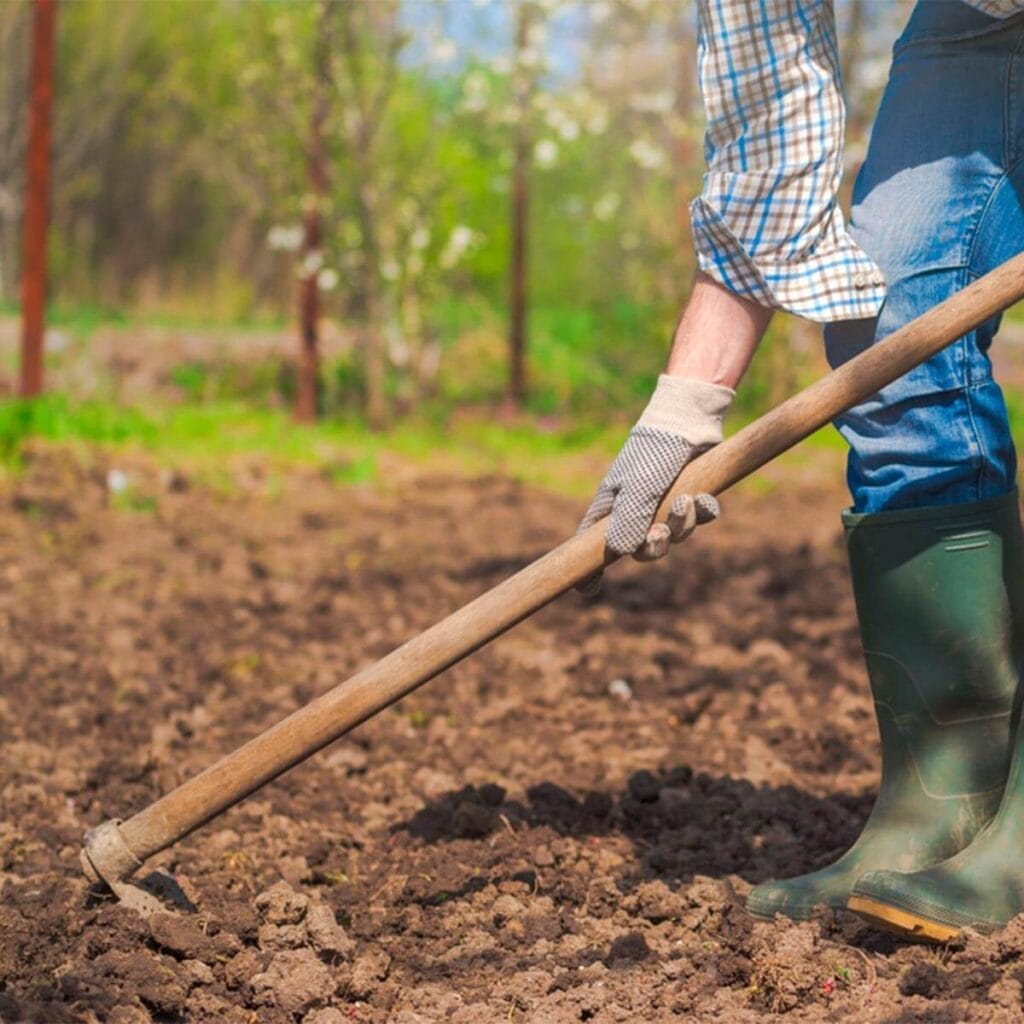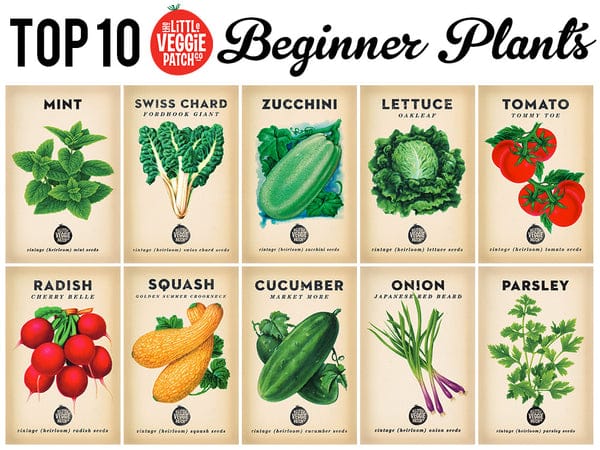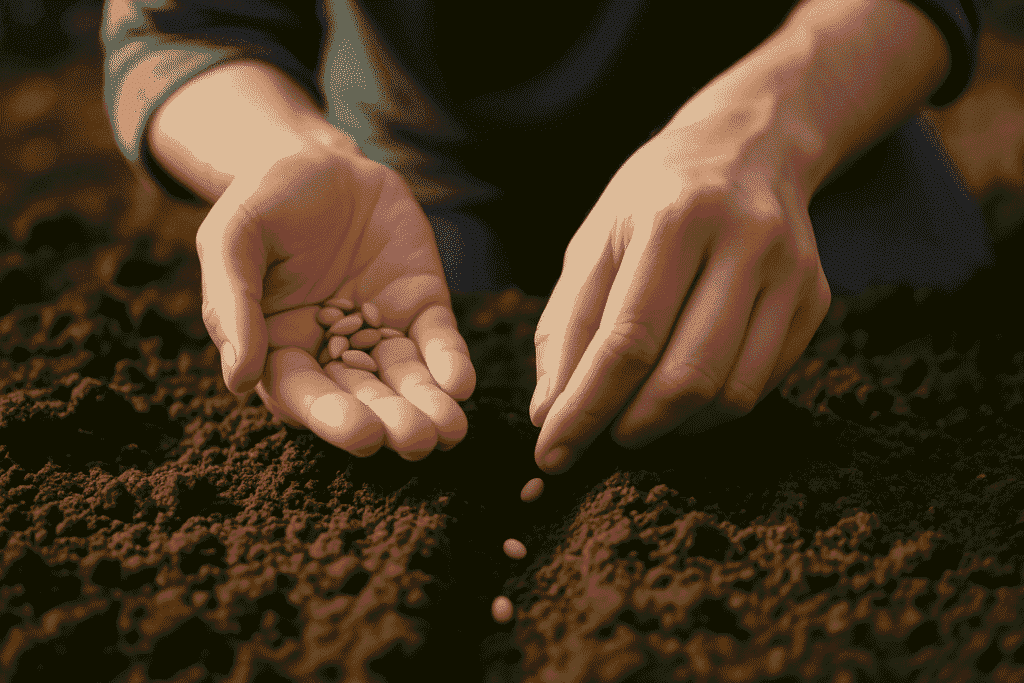What is a Vegetable Garden? A vegetable garden is a dedicated space, typically outdoors, where edible plants are cultivated for personal consumption. It’s a rewarding endeavor that allows you to grow fresh, healthy produce, connect with nature, and understand the journey of your food from seed to table. This guide will walk you through the essential steps to successfully start and maintain your very first vegetable garden, ensuring a bountiful harvest even as a novice.
Steps to Cultivating Your First Vegetable Garden
Embarking on your vegetable gardening journey can seem daunting, but by breaking it down into manageable steps, you’ll find it to be an enjoyable and fruitful experience. Here’s a comprehensive guide to help you establish a thriving vegetable garden from scratch:
Step 1: Choosing the Ideal Site for Your Garden
The success of your vegetable garden hinges significantly on its location. Selecting the right spot is paramount for healthy plant growth and abundant yields. Consider the following factors when choosing your garden site:
•Sunlight is Key: Most vegetables are sun-lovers, requiring a minimum of 6-8 hours of direct sunlight daily. Locations with 8-10 hours are ideal for optimal growth and productivity. Observe your yard throughout the day to identify areas that receive consistent, unobstructed sunlight. Avoid spots shaded by large trees, buildings, or fences, as insufficient light can lead to leggy plants and poor harvests.
•Accessibility and Convenience: Choose a location that is easily accessible for daily tasks like watering, weeding, and harvesting. Proximity to a water source is crucial to avoid the arduous task of hauling water across your yard. A convenient location encourages more frequent attention and better garden care.
•Protection from Elements: While sunlight is essential, protection from strong winds can prevent damage to delicate plants and reduce moisture loss. If your chosen site is particularly windy, consider natural windbreaks like fences, hedges, or even taller, sturdy plants on the windward side. Ensure good air circulation to prevent fungal diseases, but avoid overly exposed areas.
•Drainage: Good drainage is vital for healthy root development. Avoid areas where water tends to pool after rain, as this can lead to root rot and other issues. If your soil has poor drainage, consider raised beds or amending the soil significantly to improve its structure. A simple drainage test involves digging a small hole and filling it with water; if it drains slowly, you have drainage issues.

An example of a well-planned vegetable garden layout, maximizing space and sunlight.
Step 2: Preparing Your Soil for Optimal Growth
Healthy soil is the foundation of a successful vegetable garden. Investing time in soil preparation will pay dividends in plant vigor and yield. Here’s how to get your garden beds ready:
•Clear the Area: Begin by removing all weeds, grass, and debris from your chosen garden site. This can be done manually by digging them out, or by smothering them with cardboard and mulch (sheet mulching) over several months. Ensure perennial weeds are completely removed to prevent them from regrowing and competing with your vegetables.
•Test Your Soil: A soil test is highly recommended for beginners. It provides valuable information about your soil’s pH level and nutrient content, guiding you on what amendments are needed. Local extension offices often offer affordable soil testing services. Without a test, you might be guessing, which can lead to imbalances.
•Improve Soil Structure with Organic Matter: Regardless of your soil type (sandy, clay, or loamy), incorporating organic matter is the single most important step in soil preparation. Spread a 2-4 inch layer of compost, aged manure, or other organic materials over your garden bed. Organic matter improves drainage in heavy clay soils, increases water retention in sandy soils, and provides essential nutrients as it breaks down. It also encourages beneficial microbial activity, creating a living, healthy soil ecosystem.
•Till or Double Dig (Optional but Recommended): For new beds, especially if your soil is compacted, tilling or double digging can help loosen the soil and incorporate the organic matter. Till to a depth of at least 8-12 inches. If you prefer a no-dig approach, simply layer organic matter on top, and over time, earthworms and other soil organisms will do the work for you.
•Adjust pH and Nutrients (Based on Soil Test): If your soil test indicates a need, amend your soil to adjust the pH or add specific nutrients. For acidic soil (low pH), add agricultural lime. For alkaline soil (high pH), add elemental sulfur. Incorporate fertilizers as recommended by your soil test results, opting for organic options where possible.

Illustrates the process of preparing garden soil, showing the incorporation of organic matter.
Step 3: Selecting Easy-to-Grow Vegetables for Beginners
Starting with vegetables known for their resilience and ease of cultivation can boost your confidence and ensure early success. Here are some excellent choices for beginner gardeners:
•Leafy Greens: Lettuce, spinach, and Swiss chard are fast-growing, require minimal space, and can often be harvested multiple times. They thrive in cooler weather and are perfect for continuous harvesting.
•Radishes: These root vegetables mature incredibly quickly, often in less than a month, making them very satisfying for impatient gardeners. They require loose, well-drained soil.
•Bush Beans: Bush beans are prolific producers and relatively low-maintenance. They don’t require staking and provide a steady supply of fresh pods. Pole beans also grow well but need support.
•Zucchini and Summer Squash: While they can be very productive (sometimes overwhelmingly so!), zucchini and summer squash are easy to grow and provide a large harvest from just a few plants. Ensure they have plenty of space.
•Tomatoes (Determinate Varieties): While some tomatoes can be challenging, determinate (bush) varieties are more compact and require less pruning and staking, making them more manageable for beginners. Choose varieties suited to your climate.
•Cucumbers: Cucumbers are relatively easy to grow, especially bush varieties or those that can be trellised to save space. They need consistent moisture and warm temperatures.
•Carrots: Growing carrots from seed can be rewarding. They need loose, stone-free soil to develop straight roots. Ensure consistent moisture for germination.
•Herbs: Basil, mint, parsley, and cilantro are excellent choices for beginners. They can be grown in pots or in the ground and provide fresh flavor for your cooking. Many are quite forgiving.

A visual guide to some of the easiest vegetables for beginners to grow.
Step 4: Mastering Planting Techniques
Proper planting techniques ensure your seeds and seedlings get the best start. Whether you’re direct sowing or transplanting, precision matters:
•Direct Sowing Seeds: For many vegetables like beans, radishes, carrots, and leafy greens, direct sowing (planting seeds directly into the garden bed) is the preferred method. Follow seed packet instructions for planting depth and spacing. Generally, plant seeds at a depth two to three times their diameter. Ensure the soil is consistently moist until germination.
•Transplanting Seedlings: For plants with longer growing seasons or those that benefit from a head start (e.g., tomatoes, peppers, squash), purchasing seedlings from a nursery or starting them indoors is common. When transplanting, dig a hole slightly larger than the seedling’s root ball. Gently remove the seedling from its container, being careful not to disturb the roots too much. Place it in the hole, backfill with soil, and water thoroughly. Plant at the same depth as in the container, or deeper for tomatoes.
•Spacing is Crucial: Overcrowding plants leads to competition for light, water, and nutrients, resulting in smaller, less productive plants. Always adhere to the spacing recommendations on seed packets or plant tags. Proper spacing ensures good air circulation, which helps prevent diseases.
•Timing is Everything: Plant at the right time for your climate and chosen vegetables. Cool-season crops (lettuce, spinach, radishes) thrive in spring and fall, while warm-season crops (tomatoes, peppers, beans) need warm soil and frost-free conditions. Consult local planting guides or resources like The Old Farmer’s Almanac for specific planting dates in your region.

A close-up of a gardener planting seeds, emphasizing the care and precision involved.
Step 5: Effective Watering Strategies
Consistent and appropriate watering is critical for vegetable garden success. Under-watering leads to wilting and stunted growth, while over-watering can cause root rot and fungal issues. Here’s how to water effectively:
•Water Deeply and Infrequently: Instead of frequent, shallow watering, aim for deep, thorough watering. This encourages roots to grow deeper into the soil, making plants more resilient to dry spells. Water until the soil is moist to a depth of 6-8 inches. For most established plants, 1 inch of water per week (from rain or irrigation) is a good general guideline.
•Water at the Base of Plants: Direct water to the soil around the base of your plants, rather than overhead watering. This minimizes water loss due to evaporation and keeps foliage dry, reducing the risk of fungal diseases. Soaker hoses or drip irrigation systems are excellent for efficient, targeted watering.
•Best Time to Water: The best time to water is early in the morning. This allows the water to soak in before the heat of the day causes excessive evaporation and gives foliage time to dry before nightfall, further reducing disease risk. Avoid watering in the middle of the day during hot weather, and late evening watering can leave plants wet overnight.
•Feel the Soil: The most reliable way to determine if your plants need water is to feel the soil. Stick your finger about an inch or two into the soil near the plant. If it feels dry, it’s time to water. This method accounts for variations in weather, soil type, and plant needs.
Step 6: Basic Pest and Disease Control
Even in a well-maintained garden, pests and diseases can emerge. Early detection and proactive measures are key to minimizing damage. For beginners, focus on organic and preventative methods:
•Regular Inspection: Frequently inspect your plants for any signs of pests (chewed leaves, sticky residue, visible insects) or diseases (spots, discoloration, wilting). Early detection makes control much easier.
•Hand-Picking: For larger pests like tomato hornworms or slugs, simply hand-picking them off your plants and dropping them into a bucket of soapy water can be very effective. This is a simple, chemical-free method.
•Strong Water Spray: A strong spray of water from a hose can dislodge aphids and other small, soft-bodied insects from plant foliage. Repeat every few days as needed.
•Beneficial Insects: Encourage beneficial insects (e.g., ladybugs, lacewings) that prey on garden pests. Plant flowers that attract them, such as dill, cilantro, and marigolds. Avoid broad-spectrum pesticides that harm these helpful allies.
•Companion Planting: Certain plants can deter pests or attract beneficial insects when planted near vegetables. For example, marigolds can repel nematodes, and basil can deter flies. Research companion planting combinations for your specific vegetables.
•Good Garden Hygiene: Remove diseased plant material promptly to prevent the spread of pathogens. Keep your garden free of weeds, which can harbor pests and diseases. Clean tools after use to avoid spreading diseases from one plant to another.
•Organic Sprays (Use as a Last Resort): If pest pressure is high, consider organic insecticidal soaps or neem oil. These are less harmful to beneficial insects and the environment than synthetic pesticides. Always follow product instructions carefully.
Differences: What Makes a Beginner’s Vegetable Garden Unique?
A beginner’s vegetable garden differs from a seasoned gardener’s plot primarily in its focus on simplicity, resilience, and learning. The emphasis is on building foundational skills and gaining confidence, rather than maximizing yield or experimenting with complex cultivation techniques.
•Simplicity Over Complexity: Beginners typically start with a smaller scale and fewer varieties of plants. The goal is to learn the basics of planting, watering, and pest management without being overwhelmed. Seasoned gardeners might experiment with advanced techniques like succession planting, grafting, or hydroponics.
•Focus on Easy-to-Grow Varieties: As highlighted in Step 3, beginners prioritize vegetables known for their high success rate and low maintenance. This contrasts with experienced gardeners who might tackle more challenging crops or heirloom varieties that require specific conditions.
•Learning and Observation: For a beginner, every wilting leaf or new sprout is an opportunity to learn. The garden becomes a living classroom. Experienced gardeners, while still learning, often rely on established knowledge and fine-tune their practices.
•Patience and Forgiveness: Beginner gardens are often more forgiving of mistakes. The chosen plants are resilient, and the scale allows for easier intervention if problems arise. This builds patience and resilience in the gardener as well.
Advantages of Starting Your Own Vegetable Garden
Beyond the fresh produce, cultivating your own vegetable garden offers a multitude of benefits that extend to your health, well-being, and even your wallet:
•Fresh, Healthy, and Flavorful Produce: Nothing beats the taste of freshly harvested vegetables from your own garden. You control what goes into your food, avoiding pesticides and chemicals, and ensuring peak freshness and nutritional value.
•Cost Savings: Over time, growing your own vegetables can significantly reduce your grocery bill, especially for popular items you consume regularly. The initial investment in seeds and tools is often recouped quickly.
•Physical Activity and Stress Reduction: Gardening is a fantastic form of exercise, engaging various muscle groups. It’s also a proven stress reliever, offering a peaceful escape and a sense of accomplishment as you nurture life.
•Connection to Nature: Spending time outdoors, observing plant growth, and interacting with the soil fosters a deeper connection to the natural world and its cycles.
•Educational Opportunity: For individuals and families, gardening is a hands-on lesson in biology, ecology, and sustainable living. Children, in particular, can learn valuable lessons about where food comes from.
•Food Security and Self-Sufficiency: Having a vegetable garden provides a degree of food security, reducing reliance on external food systems and fostering a sense of self-sufficiency.
•Community Building: Gardening can be a social activity, leading to connections with fellow gardeners, sharing tips, and even trading produce.
Frequently Asked Questions (FAQ) about Starting Your First Vegetable Garden
How much space do I need for a vegetable garden?
You can start small! Even a few containers on a balcony or a 4×4 foot raised bed can produce a surprising amount of vegetables. Begin with what you can manage and expand as you gain experience.
What are the absolute easiest vegetables for a complete beginner?
Radishes, lettuce, spinach, bush beans, and zucchini are often recommended for their quick growth and minimal fuss. Herbs like basil and mint are also very forgiving.
Do I need special tools to start a vegetable garden?
Not necessarily. Basic tools like a hand trowel, a small shovel, a rake, and a watering can are usually sufficient for a small beginner garden. You can expand your tool collection as your garden grows.
How often should I water my vegetable garden?
The frequency depends on your climate, soil type, and the specific plants. A good rule of thumb is to water deeply when the top 1-2 inches of soil feel dry to the touch. Early morning watering is best.
What kind of soil is best for a vegetable garden?
Vegetables thrive in well-drained, fertile soil rich in organic matter. If your soil is heavy clay or very sandy, amend it with compost to improve its structure and nutrient content.
How do I protect my vegetables from pests without using harsh chemicals?
Start with preventative measures like regular inspection, hand-picking pests, and encouraging beneficial insects. Companion planting and organic sprays like insecticidal soap can also be effective.
Can I grow vegetables in containers?
Absolutely! Many vegetables, including lettuce, spinach, radishes, bush beans, and even some tomato varieties, grow very well in containers. Ensure containers have drainage holes and use good quality potting mix.
When is the best time to start a vegetable garden?
This depends on your climate zone. Generally, cool-season crops are planted in early spring and fall, while warm-season crops are planted after the last frost in late spring. Consult a local planting calendar.
What is crop rotation, and do I need to do it as a beginner?
Crop rotation involves changing the location of different plant families each year to prevent pest and disease buildup and maintain soil fertility. While not strictly necessary for a very small beginner garden, it’s a good practice to learn as you expand.
How can I make my vegetable garden more sustainable?
Use organic amendments, practice composting, collect rainwater, choose native plant varieties, and minimize tilling. These practices promote soil health and reduce environmental impact.
What are some common mistakes beginners make, and how can I avoid them?
Common mistakes include overwatering, planting too early (before last frost), overcrowding plants, and neglecting soil health. Avoid these by following planting guides, checking soil moisture, and amending your soil.
Where can I find more in-depth information and support for my vegetable garden?
Beyond this guide, XLISE.com offers a wealth of detailed articles, advanced techniques, and product reviews. Local extension offices, gardening clubs, and experienced gardeners in your community are also great resources.





